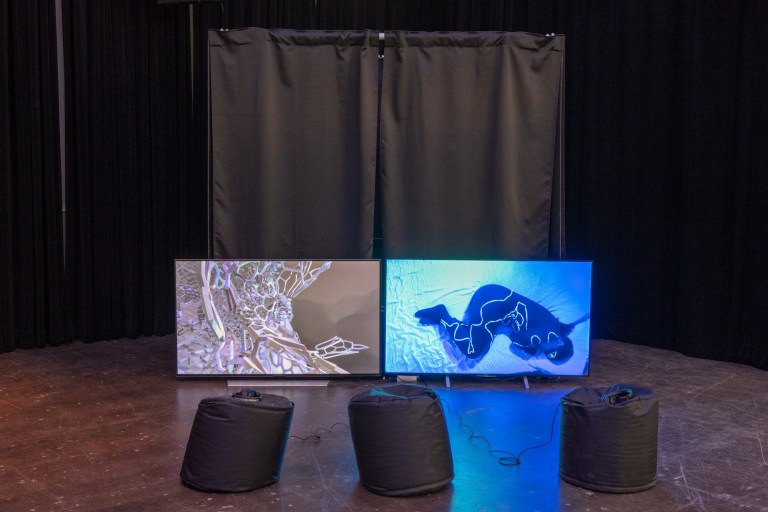SIGGRAPH ’23: ACM SIGGRAPH 2023 Talks
Abstract
Does oneiric states of consciousness drive digital and analog characters? Re-inventing mythological archetype of one’s dreamed self with augmented cognition and myth-informed mind-body relations, this talk explores metempsychosis in the dialogue between mythological narrative and technocultural imagination, describes the development process of the sleeper’s characterization and sleep choreography through the media x performance installation “Morphai,” as part of MITACS Fellowship and Sociability of Sleep, and discusses several novel approaches to sleep choreography fusing technology and body art. The notion “morphai” comes from the human shapes that the Greek god of dreams, Morpheus, sends to people when they fall asleep. Metempsychosis refers to the transmigration of a soul from one body to another which, in terms of body art and performance art, is externalized in movement. “Morphai” syncs the sleep performer’s dreamed self to two characters – the augmented avatar and the linework figure from moving inside a phosphorescent costume. Featuring the performance by artists Dayna McLeod and Laurie-Anne Gosselin, two Morphai dance to the score of the sleep performer’s own motion, neurological and physical, as an extension to the self in a continuous landscape of consciousness. As the digital Morphai is animated through biosensor data in sleep, the performer is dressed in a phosphorescent costume that blurs out their day identity but accentuates their night form, as a ritualized investigation of if and how sleep can be performed, fusing digital media and performance. The work “Morphai” is exhibited at Sociability of Sleep’s culmination exhibition “InSomnolence” curated by Marianne Cloutier, Alanna Thain and Aleksandra Kaminska, from June to July, 2023, in Tio’tia ke/Montréal.
Access:
https://dl.acm.org/doi/10.1145/3587421.3595438


Exhibition photo by Paul Litherland, exhibition “InSomnolence,” June – July 2023.